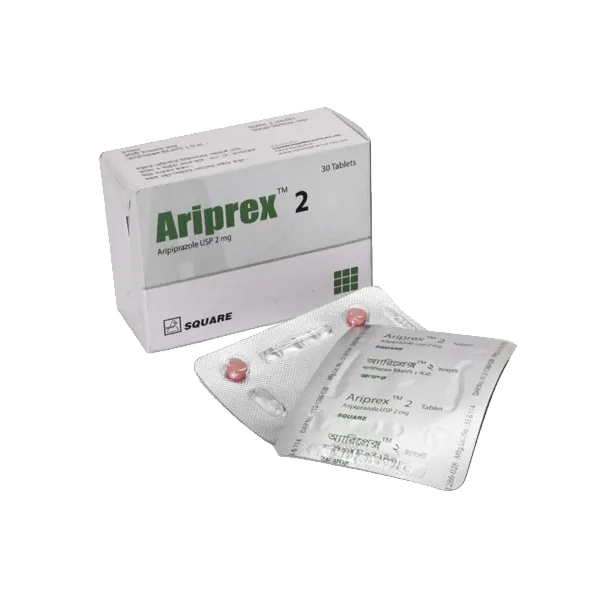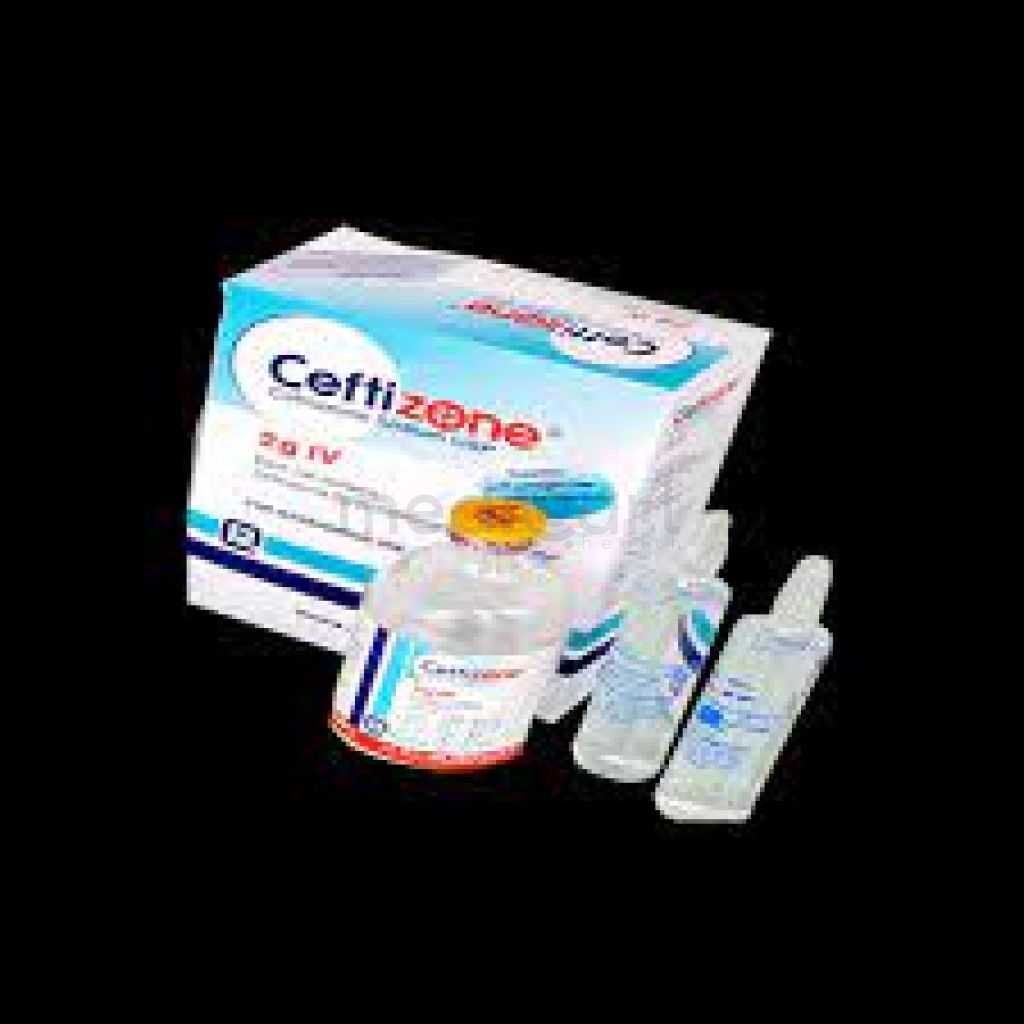

Ariprazole - 10mg
Tablet
Pack Size :
10 Tablet x 1 Strip
Generics :
Aripiprazole
Manufacturer :
General Pharmaceuticals Ltd.
Best Price *
TK
50.00
* Delivery will be done in Dhaka city only.
Alternative Product
More Information About - Ariprazole - 10mg
Description
Generic Name
AripiprazolePrecaution
Patients with known CV diseases (e.g. history of MI, IHD, CCF or conduction abnormalities), cerebrovascular diseases or conditions which would predispose patients to hypotension; Alzheimer's disease and dementia. Caution when operating hazardous machinery, including automobiles when taking aripiprazole. Pregnancy. Lactation: Excreted in human breast milk; a decision should be made whether to discontinue nursing or to discontinue the drug, taking into account the importance of the drug to the motherIndication
Major depressive disorder, Schizophrenia, Acute manic episodes of bipolar disorder, Agitation, Irritability in autismContra Indication
Hypersensitivity. Lactation. Children <18 yr.Dose
N/ASide Effect
>10% Weight gain (8-30%),Headache (27%),Agitation (19%),Insomnia (18%),Anxiety (17%),Nausea and vomiting (11-15%),Akathisia (10-13%),Lightheadedness (11%),Constipation (10-11%) 1-10% Dizziness (10%),Dyspepsia (9%),Somnolence (5-8%),Fatigue (6%),Restlessness (6%),Tremor (6%),Dry mouth/xerostomia (5%) ,Extrapyramidal disorder (5%),Orthostatic hypotension (1-5%),Musculoskeletal stiffness (4%),Abdominal discomfort (3%),Blurred vision (3%),Cough (3%),Pain (3%),Myalgia (2%),Rash,Rhinitis <1% Altered mental status,Autonomic instability,Dysphagia,Hyperpyrexia,Muscle rigidity,Neuroleptic malignant syndrome (NMS),Seizure,Tardive dyskinesiaPregnancy Category
Name : Not Classified
Description
FDA has not yet classified the drug into a specified pregnancy category.Mode of Action
Aripiprazole acts as a partial agonist at D2 and 5-HT1A receptors and as an antagonist at 5-HT2A receptors.Interaction
Drugs that induce CYP3A4 (e.g. carbamazepine) could cause an increase in aripiprazole clearance and lower blood levels. Inhibitors of CYP3A4 (e.g. ketoconazole) or CYP2D6 (e.g. quinidine, fluoxetine or paroxetine) can inhibit aripiprazole elimination and cause increased blood levels. Increased CNS depression with ethanol.Pregnancy Category Note
Pregnancy Neonates exposed to antipsychotic drugs during third trimester of pregnancy are at risk for extrapyramidal and/or withdrawal symptoms following delivery; limited published data on aripiprazole use in pregnant women are not sufficient to inform any drug-associated risks for birth defects or miscarriage; no teratogenicity observed in animal reproductive studies with intramuscular administration of drug Extrapyramidal and/or withdrawal symptoms, including agitation, hypertonia, hypotonia, tremor, somnolence, respiratory distress and feeding disorder reported in neonates exposed to antipsychotic drugs during the third trimester of pregnancy; symptoms have varied in severity; monitor neonates for extrapyramidal and/or withdrawal symptoms and manage symptoms appropriately; some neonates recover within hours or days without specific treatment; others required prolonged hospitalization Lactation Aripiprazole is present in human breast milk; there are reports of poor weight gain in breastfed infants exposed to aripiprazole and reports of inadequate milk supply in lactating women taking aripiprazole; development and health benefits of breastfeeding should be considered along with mother?s clinical need for therapy and any potential adverse effects on breastfed infant from treatment or from underlying maternal conditionAdult Dose
Adult: PO Schizophrenia Initial: 10-15 mg once daily. Maintenance: 15 mg once daily. Max: 30 mg once daily without regard to food. Dose increment should not be made before 2 weeks, the time needed to achieve steady state. Bipolar mania 30 mg once daily. May reduce to 15 mg once daily according to tolerability. Major Depressive Disorder 2-5 mg/day PO initially; increased weekly PRN by <5 mg/day to dose range of 2-15 mg/day Elderly: Reduce initial dose.Child Dose
Schizophrenia 13-17 years: 2 mg/day PO initially; increased to 5 mg/day after 2 days; increased to recommended dosage of 10 mg/day after additional 2 days; may subsequently be increased by 5 mg/day; maintenance: 10-30 mg/day Bipolar Mania Acute manic or mixed episodes, either as monotherapy or as adjunct to lithium or valproate 10-17 years: 2 mg/day PO initially; increased to 5 mg/day after 2 days; increased to recommended dosage of 10 mg/day after additional 2 days; may subsequently be increased by 5 mg/day; maintenance: 10-30 mg/day Autism Irritability associated with autistic disorder <6>1 week to target dosage of 5 mg/day; may gradually be further increased PRN to 10 mg/day or higher; not to exceed 15 mg/day Tourette Disorder 6-18 years (<50 kg) Initiate at 2 mg/day PO with a target dose of 5 mg/day after 2 days The dose can be increased to 10 mg/day in patients who do not achieve optimal control of tics Dosage adjustments should occur gradually at intervals of no less than 1 week 6-18 years (?50 kg) Initiate at 2 mg/day PO for 2 days, and then increase to 5 mg/day for 5 days, with a target dose of 10 mg/day on day 8 The dose can be increased up to 20 mg/day for patients who do not achieve optimal control of tics Dosage adjustments should occur gradually in increments of 5 mg/day at intervals of no less than 1 weekRenal Dose
N/AAdministration
May be taken with or without food.Disclaimer
The information provided herein are for informational purposes only and not intended to be a substitute for professional medical advice, diagnosis, or treatment. Please note that this information should not be treated as a replacement for physical medical consultation or advice. Great effort has been placed to provide accurate and comprehensive data. However, Medicart along with its authors and editors make no representations or warranties and specifically disclaim all liability for any medical information provided on the site. The absence of any information and/or warning to any drug shall not be considered and assumed as an implied assurance of the Company.










